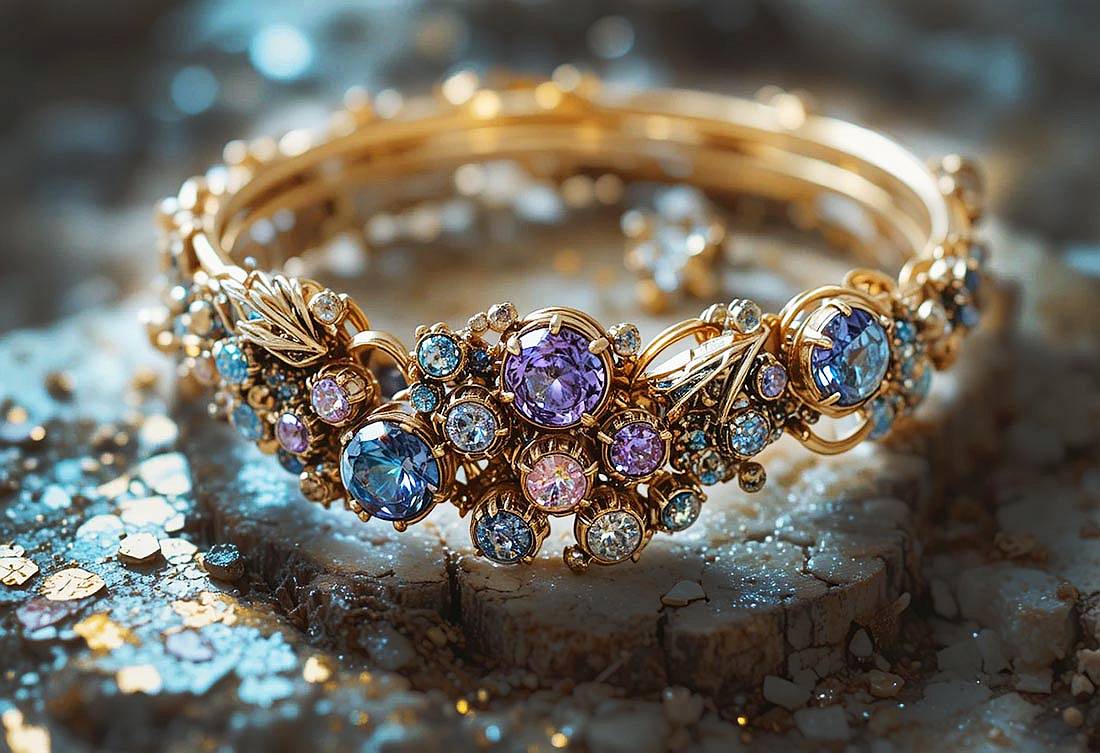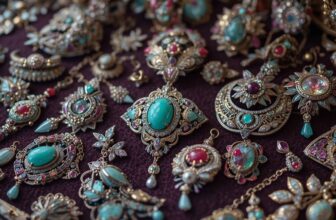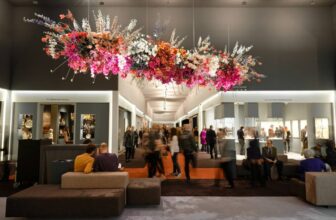
Timeless Treasures: Art Deco vs Art Nouveau vs Edwardian Jewelry
How to Spot the Differences & Discover Your Perfect Vintage Style
Vintage jewelry tells stories of elegance, craftsmanship, and changing cultural trends. Three of the most beloved and collectible eras in fine jewelry design are Art Deco, Art Nouveau, and Edwardian. Each of these styles reflects a distinct period in history , from the flowing, nature-inspired curves of the late 19th century to the geometric glamour of the Roaring Twenties.
In this guide, we’ll explore:
The evolution of each jewelry design movement
How to spot the differences between Deco, Nouveau, and Edwardian pieces
Tips to find which era matches your personal style
Whether you’re a jewelry collector, a vintage enthusiast, or simply captivated by old-world glamour, this article will help you confidently recognize and appreciate these timeless designs.
The Birth of Elegance: Understanding the Three Eras
Art Nouveau Jewelry (1890–1910)
Emerging in the late 19th century, Art Nouveau jewelry was part of a broader artistic movement celebrating organic forms, femininity, and natural beauty. The name “Nouveau” means “new,” and the style broke away from rigid Victorian traditions.
Time Period: 1890 to around 1910
Cultural Background: A reaction against mass industrialization, favoring handcraftsmanship and artistic expression.
Influence: Symbolism, Japanese art, nature motifs, and flowing lines.
Notable Designers: René Lalique, Georges Fouquet, Louis Comfort Tiffany.
Nouveau jewelry embraced sensuality, movement, and femininity , celebrating the woman as a central subject. This period was less about precious gems and more about artistry.
Edwardian Jewelry (1901–1915)
The Edwardian era coincided with the reign of Edward VII in Britain and reflected the height of elegance and aristocratic refinement.
Time Period: 1901 to around 1915
Cultural Background: The Belle Époque period, a time of social confidence, lavish parties, and exquisite fashion.
Influence: High society tastes, delicate craftsmanship, technological advancements in metalwork.
Notable Jewelers: Cartier, Tiffany & Co., Boucheron.
Edwardian jewelry is known for its lightness, refinement, and romantic detailing, often using platinum to create intricate lace-like patterns.
Art Deco Jewelry (1920–1939)
Art Deco emerged in the 1920s, bringing a dramatic shift from Edwardian delicacy to bold geometry and modern luxury.
Time Period: 1920 to late 1930s
Cultural Background: Post–World War I optimism, industrial progress, and global modernism.
Influence: Machine age, modern architecture, Cubism, Egyptian revival, and glamour.
Notable Jewelers: Van Cleef & Arpels, Cartier, Bulgari.
Art Deco embraced sleek lines, symmetry, and luxury materials , symbolizing power and sophistication.
💎 Key Design Characteristics: How to Spot the Differences
Let’s break down the visual clues and materials that define each era.
| Feature | Art Nouveau | Edwardian | Art Deco |
|---|---|---|---|
| Shapes & Lines | Flowing, asymmetrical, natural curves | Delicate, romantic, filigree | Geometric, symmetrical, bold |
| Materials | Enamel, horn, ivory, semi-precious stones | Platinum, diamonds, pearls | Platinum, white gold, onyx, emerald, sapphire |
| Motifs | Dragonflies, flowers, female figures, butterflies | Garlands, bows, lace patterns, floral sprays | Sunbursts, zigzags, chevrons, stepped patterns |
| Overall Style | Whimsical & artistic | Refined & graceful | Glamorous & modern |
A. Identifying Art Nouveau Jewelry
Art Nouveau jewelry is instantly recognizable by its fluid, organic lines and artistic subject matter. Look for:
Curved silhouettes inspired by vines, waves, and the female form
Plique-à-jour enamel (a translucent technique like stained glass)
Pastel and earthy tones rather than bold colors
Use of materials like horn, glass, enamel, and less emphasis on diamonds
Symbolism , dragonflies, nymphs, flowers, and peacocks are common
Example: A brooch shaped like a woman’s face surrounded by swirling hair, with soft-colored enamel and an opal centerpiece.
Spotting tip: If the piece feels dreamy, romantic, and sculptural rather than sparkly or symmetrical, it’s likely Nouveau.
B. Identifying Edwardian Jewelry
Edwardian pieces are the epitome of refinement , graceful, lacy, and delicate. Look for:
Fine platinum settings with incredible detail
Lace or garland patterns (often called “garland style”)
Diamonds as the dominant stone, paired with pearls
Light, airy designs that seem to float on the skin
Millegrain edges , tiny beaded details that add a soft shimmer
Example: A delicate tiara or necklace featuring diamond bows and swags, set in platinum with impeccable craftsmanship.
Spotting tip: If the jewelry has a weightless, lace-like structure and features diamonds or pearls in elegant patterns, it’s likely Edwardian.
C. Identifying Art Deco Jewelry
Art Deco pieces are bold, symmetrical, and eye-catching. Look for:
Clean geometric lines , squares, triangles, circles, stepped shapes
Contrasting colors: black onyx with white diamonds, or emerald green with platinum
Streamlined, modern, machine-age look
Heavier settings compared to Edwardian lacework
Bright gemstones , sapphires, emeralds, rubies , often cut in baguette or calibré shapes
Example: A cocktail ring with a central diamond surrounded by black onyx in a perfect square shape.
Spotting tip: If it looks bold, modern, and architectural , with strong symmetry , it’s likely Deco.
The Evolution of Jewelry Design: From Whimsy to Glamour
Each of these jewelry eras reflects not only changing artistic tastes but also major shifts in society and technology.
From Nature to Modernism
Art Nouveau (1890–1910) emerged as a reaction against industrialization. Artists wanted to bring art into everyday life, including personal adornment. Jewelry was more about artistry than status or gem value.
Edwardian (1901–1915) reflected aristocratic elegance at the height of the Belle Époque. Jewelry was light, romantic, and showcased technical advances like platinum work.
Art Deco (1920–1939) represented the modern age , after World War I, women experienced greater independence. Jewelry became bold, glamorous, and a statement of confidence.
Technological & Cultural Influences
Platinum innovations in the Edwardian period allowed for delicate filigree work never seen before.
New gemstone cutting techniques in the Deco era made sleek, geometric designs possible.
Enameling mastery during Nouveau created ethereal, painterly effects.
Cultural moments like the reign of Edward VII, the artistic explosion of the turn of the century, and the Jazz Age after World War I all shaped how jewelry was designed, worn, and valued.
Motifs & Symbolism: More Than Just Beauty
Each era communicated values and cultural mood through its motifs.
Art Nouveau Motifs
Nature: Flowers, vines, dragonflies, peacocks , reflecting a romantic view of the natural world.
Women: Ethereal female figures, often nymph-like, symbolizing beauty and creativity.
Fantasy: Mythological creatures and dreamy, flowing designs.
This jewelry often conveyed personal expression and artistic identity rather than wealth.
Edwardian Motifs
Garlands & swags: Inspired by classical and Rococo art, symbolizing grace and celebration.
Bows & ribbons: Feminine, romantic, and playful.
Lace patterns: Evoked softness and refinement.
Diamonds & pearls: Status and elegance.
Edwardian jewelry celebrated refined luxury, designed for high society events.
Art Deco Motifs
Geometric patterns: Zigzags, chevrons, fans, and sunbursts , reflecting modern architecture.
Egyptian & exotic revival: Influences from discoveries like Discovery of Tutankhamun’s tomb in 1922.
Contrasts & symmetry: Symbolizing modernity, speed, and progress.
Deco jewelry was cosmopolitan and bold, mirroring the energy of the Jazz Age.
How to Match Your Style to a Jewelry Era
Choosing between Art Deco, Art Nouveau, and Edwardian styles depends on your personal aesthetic and lifestyle. Here’s a quick guide to help you discover your match:
| Style Personality | Ideal Jewelry Era | Why It Fits |
|---|---|---|
| Romantic, artistic, whimsical | Art Nouveau | Flowing, feminine shapes and unique craftsmanship |
| Classic, elegant, refined | Edwardian | Delicate lace-like platinum and timeless diamond settings |
| Bold, confident, modern | Art Deco | Statement-making geometry and strong design lines |
For the Dreamer: Art Nouveau
If you love soft lines, nature-inspired motifs, and one-of-a-kind artistry, Nouveau jewelry may speak to your soul. These pieces are perfect for those who see jewelry as wearable art.
Try wearing: a dragonfly brooch, plique-à-jour enamel pendant, or cameo ring.
For the Sophisticate: Edwardian
If your style leans toward timeless elegance, Edwardian jewelry offers understated luxury. Perfect for bridal looks, evening wear, or heirloom pieces.
Try wearing: delicate diamond drop earrings, pearl choker necklaces, or platinum filigree rings.
For the Statement Maker: Art Deco
If you love making a bold entrance and appreciate sleek modern design, Deco jewelry is your match. These pieces add instant drama and glamour to any outfit.
Try wearing: bold cocktail rings, geometric bracelets, or long diamond sautoirs.
Caring for Vintage Jewelry
No matter which era you fall in love with, proper care ensures these pieces last for generations.
Store carefully: Keep pieces in soft-lined boxes, separated to avoid scratches.
Clean gently: Use mild soapy water and a soft brush; avoid harsh chemicals.
Avoid stress: Don’t wear delicate pieces during sports, swimming, or heavy activity.
Regular checkups: Have clasps, prongs, and settings checked by a jeweler periodically.
Know the materials: Enamel and platinum require different care than gold or silver.
Especially with Nouveau enamel and Edwardian platinum, gentleness is key.
Buying Authentic Vintage Jewelry
Whether collecting or investing, knowing how to authenticate vintage pieces is essential.
Tips to Identify Genuine Pieces
Check the craftsmanship: Older pieces often show handwork and small irregularities, a sign of authenticity.
Examine the materials: Platinum became popular in the Edwardian era; white gold in Deco. Nouveau often used enamel or horn.
Look for hallmarks and maker’s marks: Many famous jewelers stamped their creations.
Verify gemstone cuts: Old mine cuts and rose cuts were common before modern brilliant cuts.
Consult an expert: A professional appraisal can confirm the era and value.
Reproductions exist, especially for popular Deco designs. Knowing the key characteristics helps you invest wisely.
Why These Eras Still Matter Today
Over a century later, Art Nouveau, Edwardian, and Art Deco jewelry remains highly collectible , not just for their beauty but for their craftsmanship and cultural resonance.
Nouveau pieces appeal to those who value artistic expression.
Edwardian pieces symbolize a timeless, romantic elegance.
Deco pieces remain fashion-forward, often worn as statement jewelry on red carpets and weddings.
Many modern designers draw inspiration from these eras, reinterpreting their motifs and forms for contemporary collections.
Investment Value & Collectibility
Rarity: Original Nouveau and Edwardian pieces are increasingly scarce.
Craftsmanship: Platinum filigree work and enamel techniques are difficult and expensive to reproduce.
Historical appeal: Jewelry from these eras connects wearers to stories of cultural transformation.
Resale value: Authentic Deco jewelry is highly sought-after in auctions and vintage markets.
While Cartier Deco bracelets or Tiffany & Co. Edwardian tiaras can fetch high prices, even unsigned pieces with strong design elements hold significant value.
Final Thoughts: Which Era is Right for You?
Each of these eras offers something unique:
Art Nouveau: Dreamy, whimsical, romantic , perfect for free spirits and artists.
Edwardian: Delicate, refined, timeless , perfect for classic elegance lovers.
Art Deco: Bold, glamorous, modern , perfect for statement makers and collectors.
Choosing vintage jewelry isn’t just about style , it’s about connecting with history, craftsmanship, and personal expression.
When you slip on a delicate Edwardian pendant or a bold Deco cocktail ring, you’re not just wearing an accessory. You’re wearing a story.
📌 Key Takeaways
Art Nouveau (1890–1910): flowing, nature-inspired, artistic
Edwardian (1901–1915): delicate, lacy, platinum elegance
Art Deco (1920–1939): bold, geometric, modern glamour
Each style reflects its cultural moment and offers timeless beauty
Knowing how to spot design cues helps collectors and jewelry lovers find their perfect match.
💍 In Summary
Whether you’re drawn to the soft romance of Art Nouveau, the aristocratic charm of Edwardian, or the bold glamour of Art Deco, vintage jewelry offers a bridge between history and personal style. Understanding these differences empowers you to choose pieces that speak to your soul , and shine for generations to come.




